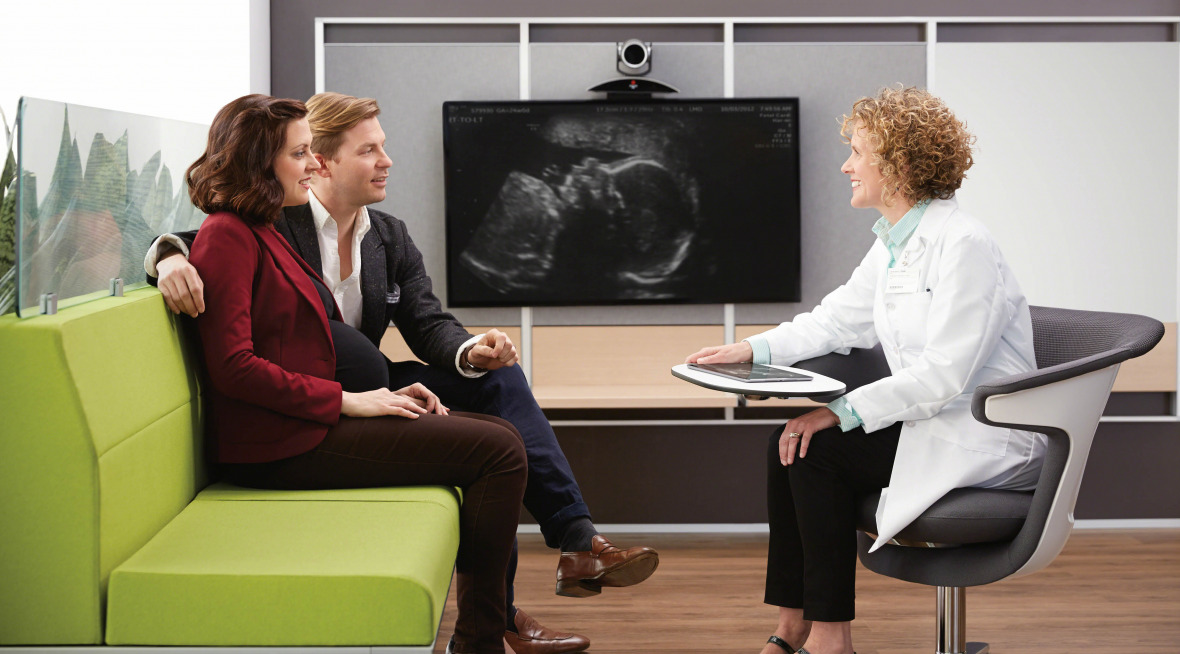We use cookies to maximize your online experience with us. By closing this window, you consent to our cookie policy. You can change your cookie settings in your browser any time. For more information, please see our Privacy Policy located on the footer of this site.
Digital Healthcare Enhances Patient-Centric Experience

Healthcare providers face mounting pressure to juggle total cost management and revenue generation while increasing positive patient health outcomes and satisfaction rates of both patients and staff. As patients become active consumers in their healthcare decisions, providers are turning to digital technologies to help their organizations overcome these hurdles. By effectively combining digital healthcare with analysis, communication, and collaboration, hospitals can now provide a more patient-centric experience leading to an increase in positive health outcomes.
Four digital health trends currently being practiced demonstrate how technology facilitates active participation from patients and reduces medical errors to achieve a higher quality of care.
1. WEARABLE DEVICES
Typical room-bound devices currently used in most facilities require constant monitoring by healthcare providers – often while the patient is resting or sleeping. Wearable biosensors can ease this burden of data collection and analysis by transmitting data to devices carried by healthcare providers. Information such as vital signs, skin conductance, blood pressure, electrocardiogram (ECG), and electroencephalography can be delivered immediately to a smartphone or tablet carried by healthcare personnel without the need to disturb the patient. The digital technology not only helps reduce user error, it provides more opportunity for administrators to strategize the best course of action and improve the interact with their patients.
2. DISPLAYS
Patients become engaged in their own healthcare outcomes with the use of displays throughout their healthcare experience. Using integrated technology, providers can share various imaging and diagrams to more easily explain conditions or procedures to patients and their support team. In addition to growing the physician-patient relationship, this collaboration gives shared control to all parties involved in the decision-making process.
Touchscreen displays and tablets are also helpful tools to help patients view their own medical records, test results, and treatment schedules. Access to this data empowers patients to not rely solely on staff members for updates and ensure their records are accurate. Displays can be programmed to provide content relevant to a patient’s specific procedure and recovery, which creates additional opportunities to become involved in their treatment for a positive health outcome.
3. HEALTHCARE INFORMATION SYSTEMS
Moving from paper-based patient records to Electronic Medical Records (EMRs) in the cloud removes inefficiencies and inaccuracies of paperwork transferred between medical facilities. EMRs provide easy access to a patient’s complete medical history and up-to-the-minute status or test results regardless of a patient’s physical location. By viewing a patient’s complete medical history, the healthcare provider is able to easily note other conditions or medications that should be taken into consideration when forming a treatment strategy.
4. TELEHEALTH PROGRAMS
The digitization of healthcare strengthens physician-patient interaction through text messaging, multimedia, and video conferencing. This especially helps improve the patient experience by easing hardships for those who need to travel long distances for treatments or therapy, as physicians and specialists can physically view and communicate with patients from homes or local medical facilities. Patient satisfaction rates will also increase by allowing people with busy work and family schedules to easily communicate with their physicians with less interruption to their daily lives.
Medical knowledge in general can also benefit by integrating this communication technology. Specialists from anywhere in the world can share, discuss, and collaborate on the data and analysis of any medical condition. Their combined knowledge and communication can lead to medical breakthroughs for improved decision making and better patient outcomes.
COMMUNICATION IS ESSENTIAL
Healthcare organizations are beginning to see how digitization can help them become more efficient and financially healthy. However, it’s more than about collecting data or integrating technology. Healthcare organizations have an immense opportunity to use “smart” technology as a tool to engage patients on a personal level, open avenues of collaboration, and help patients and families make more informed and confident decisions. By allowing physicians to spend less time on administrative tasks and more time doing what they do best – taking care of patients – organizations will also see the benefit of improved patient health outcomes and satisfaction rates.
